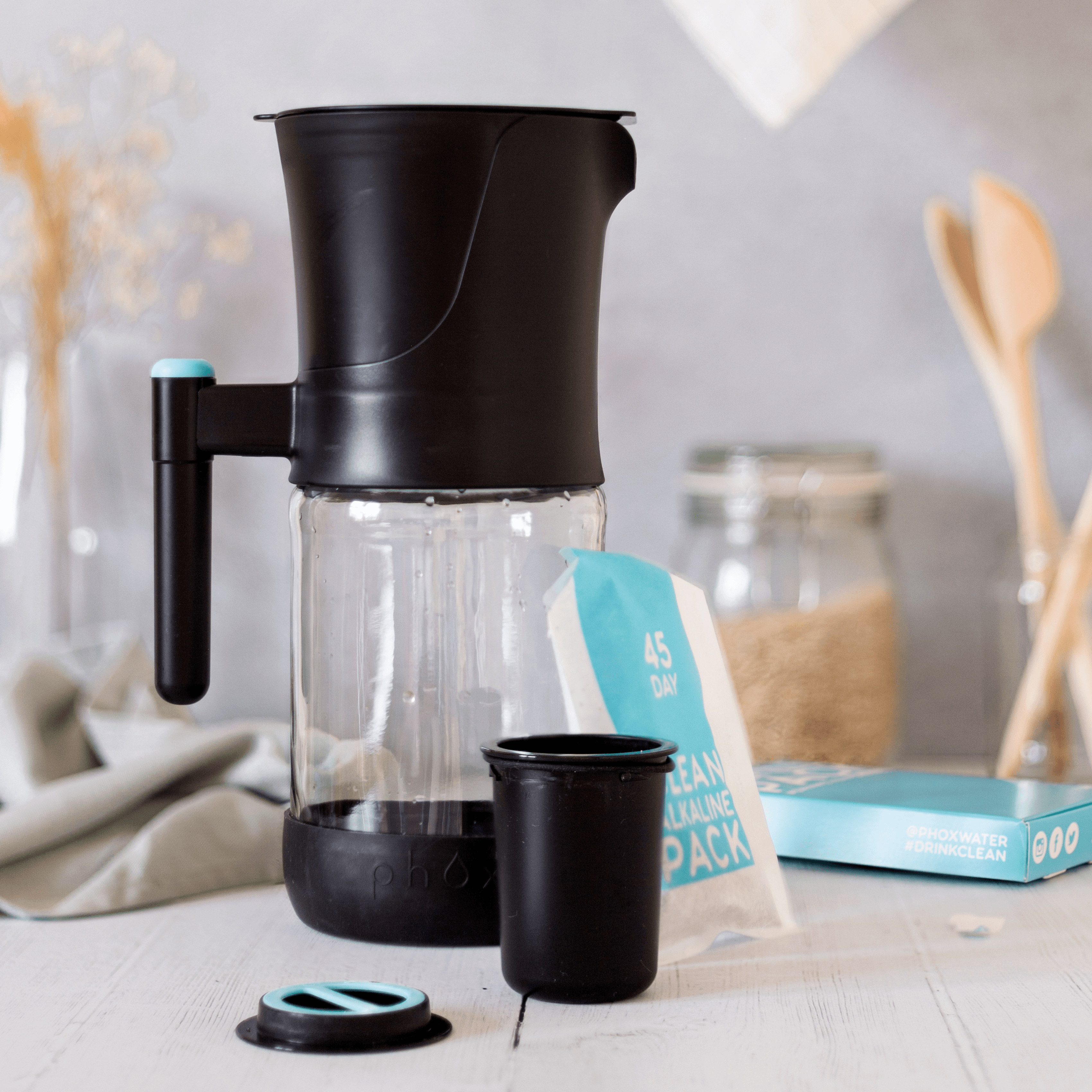Should You Measure TDS Levels in Your Drinking Water?
Do you think low TDS means better water? Think again.
Should you be concerned when you test your drinking water and discover a high TDS reading? Many people think high TDS means unsafe water, so they often choose TDS filters that remove everything – even essential minerals. But is that really the right approach?
The problem is that TDS is often misunderstood. It doesn’t only measure harmful contaminants like chlorine, lead, or pesticides. It indicates the total of dissolved solids. This total can consist of valuable minerals as well as harmful pollutants. So, instead of obsessing over TDS levels, you need a filtration approach that removes what’s bad while keeping what’s good. At Phox, our sustainable, UK-made water filters boost hydration while reducing contaminants. In this guide, we’ll explain what TDS measures and why a high or low reading doesn’t tell the whole story.
Learn how to enjoy clean, mineral-rich drinking water while reducing plastic waste.
What Is TDS and What Does It Actually Measure?
TDS stands for Total Dissolved Solids, which refers to the amount of organic and inorganic substances dissolved in water. These substances consist of minerals, salts, metals, and other compounds found in nature or produced by humans. While many believe a high TDS level means unsafe water, this is a misconception. The key question is not how much TDS is present but what those dissolved solids are.
Measuring Total Dissolved Solids
The most common measurement method is with a standard TDS meter, which is placed inside a body of water to read the TDS level. This will be shown as mg/L, and the most important thing here is to remember that a low TDS does not explicitly mean good water quality.
The World Health Organisation (WHO) states that the desired TDS levels are as follows (mg/L):
- 50 – 300: Excellent
- 300 – 600: Good
- 600 – 900: Fair
- 900 – 1,200: Poor
- Above 1,200: Unacceptable
This guide helps you understand your ideal TDS level, but remember that different drinking water types can vary. A Netflix documentary series staring Zac Efron called Down to Earth visited a water sommelier in France, who outlined the importance of minerals in drinking water. In the series, Efron was guided through bottled mineral waters with TDS levels ranging from 300-7,000! Bottles above the 1,200 range are more like medicine than water and aren’t meant for long-term drinking. The sommelier stressed that mineral content is vital in drinking water. Water with a zero TDS reading is not recommended for long-term consumption because it lacks all mineral content. It is essentially the same as distilled or 'pure' water. While those terms may sound good and cool - they're not.
What Contributes to TDS in Drinking Water?
Now, understanding what makes up TDS levels is crucial in determining water quality. The three main contributors to TDS in drinking water are:
Naturally Occurring Minerals
Many dissolved solids in water come from geological sources. For example, as water travels through rocks and underground reservoirs, it picks up minerals like calcium, magnesium, and potassium. These minerals are essential for hydration and bodily functions, yet they contribute to higher TDS readings. Due to mineral-rich groundwater, hard water areas, such as London and Bristol, naturally have higher TDS.
Water Treatment Additives
Municipal water treatment plants add disinfectants and conditioning agents. These make the water safer and better in terms of quality. Examples include chlorine (for disinfection) and fluoride (for dental health). While these substances increase TDS, they serve a specific purpose. However, some additives may cause an unpleasant taste or odour, leading people to filter them out.
Potential Contaminants
Not all dissolved solids are beneficial. TDS can also include nitrates, heavy metals (such as lead and arsenic), and industrial pollutants that pose health risks. Unlike natural minerals, these substances should be removed through proper filtration. High TDS, in combination with these contaminants, may indicate an issue with water quality.
The Drinking Water Inspectorate (DWI) monitors water safety in England and Wales. Although TDS has no strict legal limit, water suppliers must ensure contaminants remain below regulated thresholds to protect public health. To check your local water quality, visit the DWI reports.
Does High or Low TDS Mean Good or Bad Water?
Many assume high TDS means unsafe water, but this is not always true. The real question is what is dissolved in your water – not just how much.
Why High TDS Can Be Good for You
Water with a higher TDS is often rich in essential minerals. Some bottled mineral waters have TDS levels exceeding 1,500 mg/L, yet they are marketed as premium hydration products.
These minerals can:
- Support hydration and electrolyte balance: Magnesium and potassium help maintain fluid balance in the body.
- Strengthen bones and teeth: Calcium-rich water can contribute to daily mineral intake.
- Enhance flavour and mouthfeel: Many people prefer the taste of mineral water over demineralised water.
Why Low or No TDS Isn’t Always Better
Many consumers believe that zero TDS water is the purest form of hydration. This misconception has caused many to rely too much on distilled or reverse osmosis (RO) systems. These systems remove both helpful and harmful dissolved solids from water. For more information on what you consume, please see the Food Standards Agency UK.
This can lead to potential downsides, like:
- Lack of essential minerals: Demineralised water does not contain calcium, magnesium, or potassium, which are vital for health.
- More acidic water: Low TDS water can be more corrosive and may leach metals from pipes.
- Poor taste and texture: Water with no mineral content can taste flat or unnatural.
The Smart Way to Filter Your Water
Many assume lower TDS means better water, but that isn’t always true.
Measuring TDS alone doesn’t tell you if your water is safe, clean, or beneficial for hydration. What really matters is what those dissolved solids are. Safe drinking water should include key minerals like calcium and magnesium. However, it should also filter out harmful contaminants, including chlorine and heavy metals.
If you want cleaner, healthier water without unnecessary waste, it’s time to switch to a more ingenious filtration system. Phox water filters offer a green solution for better drinking water and help lower plastic pollution. Our refillable cartridges let you swap out the filtration media. Unlike traditional filters that add to landfill waste, ours help cut down on plastic waste and boost water quality. Stop guessing and start filtering correctly. Experience better hydration, better taste, and a better way to drink water with Phox.
Order your Phox V2 Water Filter today. If you have any questions, call us or contact us.


